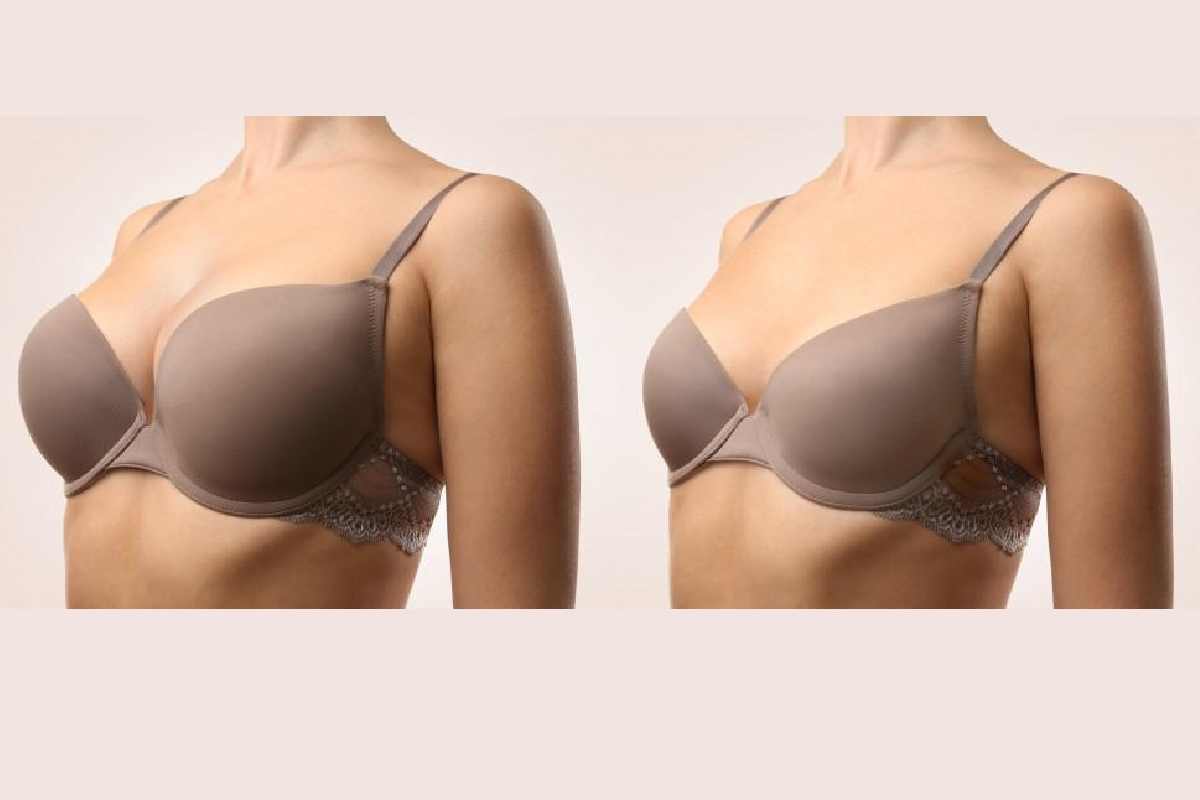Breast reduction is a type of breast enhancement done to reduce the size of your breasts. Large breasts can also be cumbersome and cause posture issues, neck and back pain, and breast pain.
Below is an overview of breast reduction procedures, including what it involves, what you can achieve, candidacy, preparations, and post-surgery recovery:
Table of Contents
What Does Breast Reduction Achieve?
The primary purpose of breast reduction is to reduce breast size. This may be due to cosmetic reasons or health concerns. People with extremely large or unproportionate breasts may seek a reduction to achieve symmetry and a flattering appearance more in line with the rest of their body. Here’s what you can achieve with breast reduction surgery:
- Rectify Disproportionately Large Breast: If you have large, unproportionate breasts, reduction surgery can reduce the size to natural proportions, complimenting your body and curves. Breast reduction surgery also helps you find more flattering clothing.
- Fix Unappealing Breast Appearance: Large breasts can appear distorted in size, shape, and position, causing the nipple-areolar complex to stretch out of position. Surgery can address these cosmetic issues and create a more aesthetic appearance.
- Remedy Pain and Mobility Issues: If your breast size makes them cumbersome and puts excess pressure on your spine, surgery can help make them more manageable. Reducing the size helps to alleviate the excess stress, remedying neck, back, and breast pain.
Who Is the Right Candidate for Breast Reduction?
Anyone dissatisfied with the appearance of their large breasts can seek reduction surgery to bring them back to a more appealing size and look. Women with large, heavy breasts can also seek surgery to alleviate back, neck, chest, and shoulder pain, as well as shoulder grooves and skin rashes beneath/between the breasts. The candidates for breast reduction surgery are adults at least 18 years old with breasts that have reached maturity. You must also be in good overall health since breast reduction is a major surgery.
How Is Breast Reduction Surgery Performed?
Breast reduction surgery begins with a consultation. Your plastic surgeon will go through your medical history and ask questions about your health, past procedures, medications, and why you need breast reduction surgery. They’ll also take you through the process, including the incisions and techniques for breast reduction. Next, the surgeon will take photos of your breast, measure them and discuss how much tissue will be removed to get the desired results.
The breast reduction surgeon will provide professional insights about the planning/preparation required for the surgery. They’ll advise you on the medications and substances to avoid leading to the surgery and help with post-procedure recovery expectations. Your surgeon may also recommend a breast exam and mammogram before the surgery. Once everything is determined and you’re approved as a good candidate, the surgeon will schedule a date for the surgery.
Here’s what step by step breast reduction in Birmingham, AL, looks like:
- Comprehensive consultation with the surgeon who will perform the procedure
- Physical inspection, breast test, and mammogram
- Surgical technique selection
- General anesthesia administration before the start of the procedure
- Incisions created using the selected surgical technique
- Excess breast tissue removal and tightening of the remaining breast skin
- The nipple-areolar complex is reduced and moved to a higher position if necessary
- Incisions are stitched with sutures and bandaged to prevent infections
- Post-operation follow-up and aftercare instruction
What’s Post-Surgery Recovery Like?
Breast reduction recovery varies from client to client. After the surgery, the surgeon will wrap bandages around your breasts to promote healing. You’ll be required to wear a special supportive bra for several weeks after removing the wraps. The surgeon will instruct you on follow-up visits for removing the bandages and stitches. Expect to take at least a week or two off from work/school. The surgeon may use drains if a lot of tissue is removed during the reduction.
Most people are ready to resume work after two weeks, but you should avoid physical activity and exercise for at least a month. Expect discomfort, tiredness and breast pain for the first few days due to the bruising and swelling. Your surgeon will recommend oral painkillers and provide comprehensive aftercare instructions, including recovery time and physical limitations. The incision scars will disappear over time and are barely visible when fully healed.
FAQs About Breast Reduction Surgery
How long does a breast reduction procedure take?
Breast reduction surgeries are outpatient procedures that take two to five hours, depending on how much work is needed. You’ll be under general anesthesia during the surgery and ready to go home the same day. Some people might stay one night at the clinic.
What are the surgical techniques involved?
Popular breast reduction techniques include Liposuction, Short-Scar Vertical/Lollipop, Anchor T-Scar/Wise Pattern, and No Vertical Scar/Horizontal. Your surgeon will discuss all options and recommend the best surgical technique based on your needs and goals.
Is breast reduction a safe procedure?
Yes. Breast reduction surgeries are safe when done by experienced, board-certified plastic surgeons. However, the surgery is invasive and carries concerns like scarring, infection, and complications. Your surgeon will discuss all problems and how they’ll evade them.
Are breast reduction results permanent?
Yes. Breast reduction surgery results are intended to be permanent. However, getting pregnant and gaining a significant amount of weight will alter the results because breast tissues also grow bigger during pregnancy and weight gain.
Does insurance cover breast reduction surgery?
Yes. Some insurance plans partially cover breast reduction surgeries. You must prove that the reduction is due to a medical reason, such as physical pain and posture issues that the surgery can remedy.

